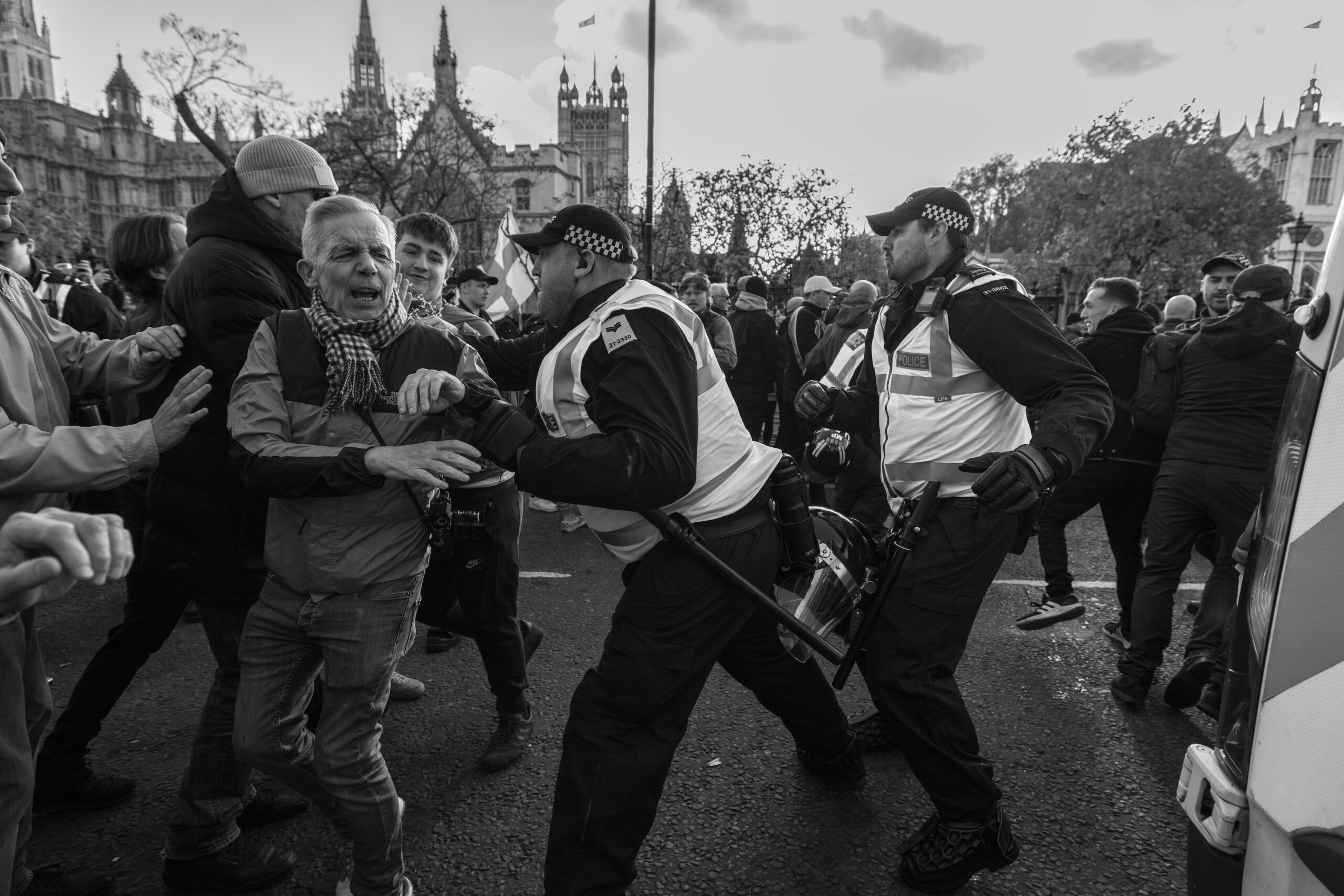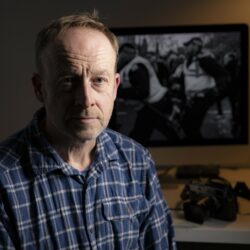



Interview with Jeff Gilbert
BIFA 2024 Winner, 1st Place, Professional Editorial, “London Armistice Day Riots”
Q: Can you tell us a bit about your background and what inspired you to embark on a career in photography? Was there a specific moment when you realized this was your calling?
I’ve been working as an editorial photographer based in London since 1995. I’ve always been interested in photography since my father used to bring home old cameras for me to experiment with. I’m a keen reader and traveller, always keeping up to date with current affairs, and what’s happening in the far corners of the world. The 80’s and 90’s documentary photographers were a massive inspiration and through looking at their images motivated me to become an editorial photographer. Moving to London I first worked as an assistant at Holborn Studios, which gave me a great insight into the business and to meet a lot of amazing photographers, but my journey began when I managed to get to work for the Press Association, then in Fleet Street. News photography has always been my ambition.
Q: What was the inspiration behind your winning project? How did the idea come to you, and what message were you aiming to convey through your work?
The images included in my winning entry were shot whilst on assignment for The Sunday Telegraph. I’ve worked as a freelancer for this title since the 1990’s. I’ve covered a lot of highly charged news assignments for them over the years, home and abroad. I always try to get close to the action, give a sense of the occasion and atmosphere through my images.
Q: Every great story comes with its challenges. What were some of the hurdles you faced while capturing your award-winning project, and how did you overcome them?
Armistice Day can be a highly charged day in Whitehall, London. In this particular year the UK Home Secretary fuelled the Far-Right demonstrators after accusing the Police of being soft on other Pro-Palestine marches across London. The far-right were angry, creating a very toxic atmosphere. After the annual two- minute silence to remember those who died in conflict the far-right became very hostile. At one point I had 200 supporters shouting abuse at me and a man trying to physically knock me to the ground to take my cameras as the protesters didn’t want to be identified. I managed to break free and then luckily they were distracted after seeing pro-Palestinians a 100 meters away. Then the far-right protesters ran to attack them, launching bottles and attacking the Police and pro-Palestinians with sticks. It was very dangerous at this moment. As a photographer you have to get close in these situations and know when the right time is to leave the situation. I was on a tight deadline, and needed to judge when I was able to wire images to the picture desk.
Q: What motivated you to enter the Budapest International Foto Awards? What does winning 1st place in your category mean to you personally and professionally?
It’s a great honor to have won the 1st Place prize and great to have my work showcased. It’s really important to remind editors that we are out there and have our work seen on as many platforms as possible.
Q: Could you share some insights into the equipment and techniques you used to create your winning images? Is there a particular tool or method you always rely on?
For this type of assignment I used two Canon R5 cameras with wide-angle zoom lenses. Setting a fast shutter speed to stop any movement. It’s important to have quick feet and your whits about you so as not to get in the wrong situation. On this occasion I managed to finish the day with all my gear intact.
Q: Looking back on your journey, what has been the highlight of your career so far? How does this award compare to other milestones you’ve achieved?
During my 30 year journey as a photographer I really enjoy the variety of assignments an editorial photographer gets to experience. I really enjoy travelling and meeting people from all walks of life, although of course this assignment was shot on my doorstep and I wouldn’t want to meet any of the far-right protesters again!. I’m really grateful for the recognition these images have received with winning this award.
Q: What advice would you offer to emerging photographers hoping to make their mark in the industry? Are there any lessons you’ve learned that you wish you’d known earlier?
My advice would be to get out there shooting stories as soon as you can. I only really began my journey as a professional photographer aged 24. I wish I’d had the knowledge and determination to get out there working professionally earlier.
Q: Photography is often described as a universal language. How do you approach storytelling in your work, and how do you connect emotionally with your audience?
When shooting documentary assignments I try to portray people exactly as they are without interfering, be honest, and true to people.
Q: If you could work on any photography project in the world, unrestricted by budget or location, what would it be and why?
Difficult to put my finger on one project – I’ll go anywhere! I’d love to see more of the U.S.A, Africa, I’ve yet to make it to South America. Maybe shoot something relating to the decline of worldwide religions…
Q: What’s next for you after this incredible achievement? Are there any upcoming projects or goals that you’re particularly excited about?
I’m always looking to work with new editorial titles and editors. I’m shooting regular assignments for The Daily & Sunday Telegraph, and occasionally for Scandinavian titles I’ve worked with the last 20 years, then in my spare time out shooting street photography where I’m working on a number of projects. My goal would be to grow my network and reach some new clients on the back of this award.